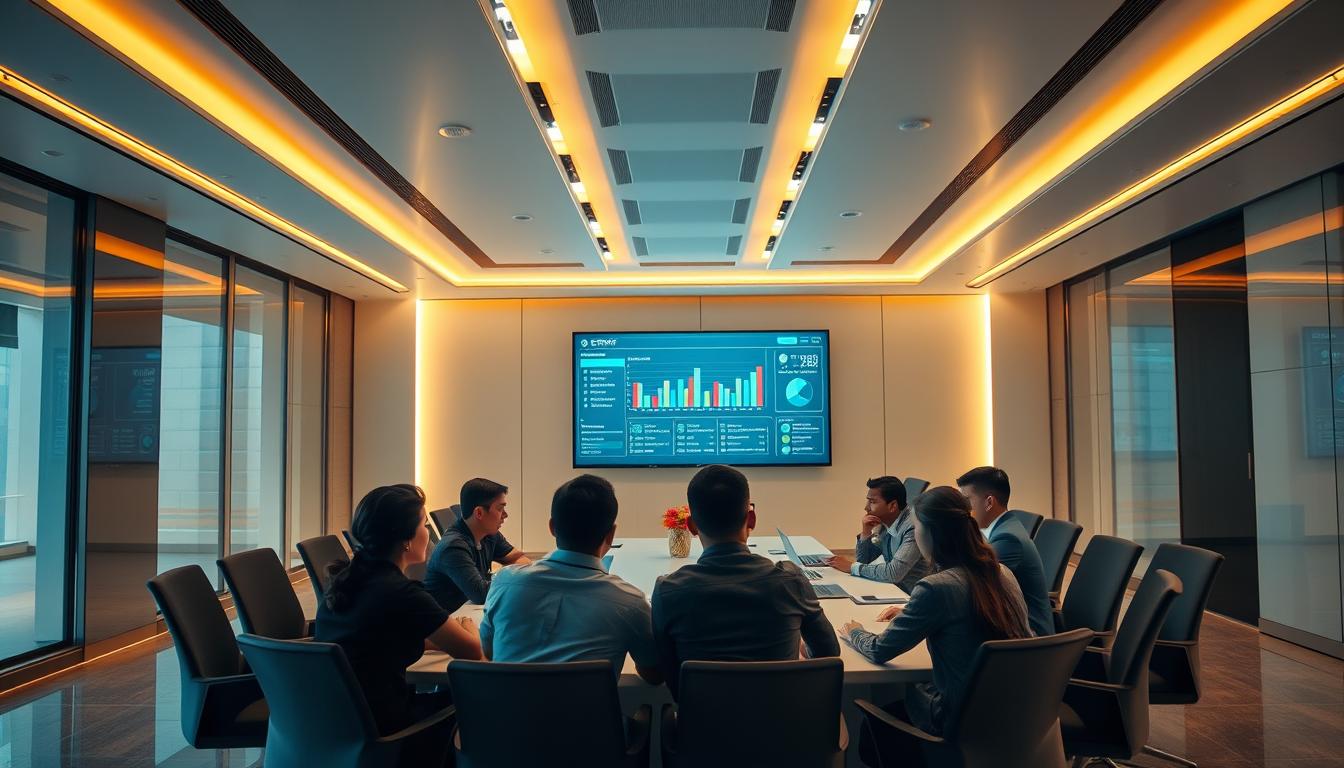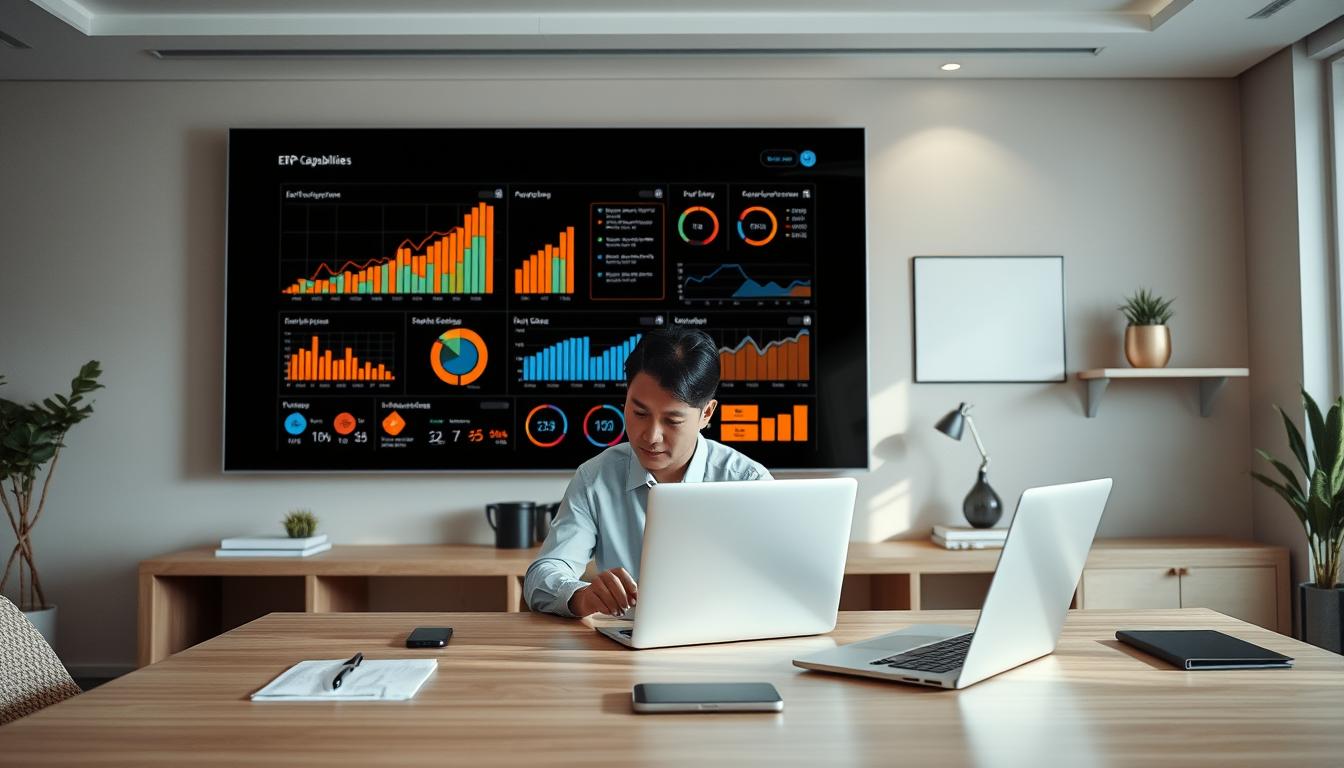Ever wondered why some businesses do great after ERP upgrades, while others struggle? Keeping an ERP system up to date is key for better operations and digital growth. For small businesses in the Philippines, good upgrades can make things smoother and better for users. But, bad upgrades can mess up your business.
This section will cover the best ways to handle upgrades. We’ll make sure your business not only survives but thrives in a tough market.
Key Takeaways
- The importance of careful planning for ERP system upgrades.
- How post-implementation support can enhance user satisfaction.
- Strategies for effective upgrades that align with business goals.
- Recognizing the role of continuous training in software adoption.
- Understanding potential pitfalls that can disrupt business operations.
Understanding the Importance of ERP System Upgrades
For small and medium-sized enterprises (SMEs) in the Philippines, it’s key to understand ERP upgrades. These upgrades bring new features, better data analysis, and stronger security. Using old systems can hold back growth and risk losing support from vendors.
Modern ERP solutions give a clear view of all business areas. This helps cut costs and follow industry rules. It’s essential for fast-growing sectors like retail and manufacturing.
ERP upgrades help integrate new tech smoothly. This leads to smarter decisions and quick responses to market shifts. Investing in upgrades can give companies a competitive edge.
Upgrading ERP systems boosts efficiency. It lets SMEs innovate and meet customer needs quickly. This can turn challenges into chances for growth in a tough market.
| Benefit of ERP Upgrades | Description | Impact on Business |
|---|---|---|
| Enhanced Features | Access to the latest technology and capabilities | Improved competitiveness |
| Improved Data Analytics | Better insights into business operations | Informed decision-making |
| Increased Security | Protection against modern cyber threats | Safeguarded company data |
| Operational Efficiency | Streamlined business processes | Reduced operational costs |
| Compliance Support | Adherence to industry regulations | Avoidance of legal issues |
When to Consider Upgrading Your ERP System
Knowing when to upgrade your ERP system is key for any business looking to improve. Upgrades are usually needed every 5 to 10 years. This is often due to performance issues that become clear.
Businesses should watch for signs that it’s time to upgrade. These signs include big changes like growth, mergers, or moving to digital. These changes often mean an ERP update is needed to stay ahead.
In the Philippines, businesses feel the need to update their ERP systems to keep up. As they grow, they hit limits with their current systems. An upgrade fixes these problems and brings in new features that make processes smoother.
Evaluating Your Current ERP Capabilities
Assessing your ERP capabilities is key for better operations. It means checking your system closely. This helps find what’s not working well, where data gets stuck, and who struggles with using it.
By looking at how your system performs, you get a clear view. This view shows if your ERP is really helping with daily tasks.
Businesses can use specific KPIs to see how their system is doing. These numbers tell you if your system is effective and if users are happy. This info is vital for SMEs in the Philippines to spot what’s missing in their systems.
An ERP assessment helps make big choices. It decides if you should update or change your system. This choice is based on what you’ve learned about your current setup.
Creating a Successful Upgrade Strategy
Creating a good upgrade strategy is key for businesses going through ERP implementations. It must match the company’s goals and what users want. Getting top-level support is a first step. It helps build a supportive environment for the upgrade.
Setting clear goals is essential for ERP upgrades. These goals should show what improvements the company hopes to see. It’s also important to plan a timeline that considers any possible disruptions. This way, the upgrade won’t disrupt daily work too much.
Companies need to figure out what resources they’ll need for the upgrade. This includes looking at staffing and budgeting for training. Working with ERP vendors can also help. They offer insights and practices that fit specific industries.
In the Philippines, using local vendor knowledge can make the upgrade strategy better. By working with these vendors, companies can make sure their plan works well. It also helps deal with the unique challenges they face.
Post-Implementation Support and Its Significance
Post-implementation support is key for a successful ERP system integration. It helps users get the most out of the system, boosting productivity and happiness. Working closely with users during the transition phase is vital. It creates a space where everyone feels comfortable using the new system.
Ensuring User Adoption and Satisfaction
Good user adoption strategies are crucial for a smooth transition to the new ERP system. By involving users in discussions, concerns are addressed directly. This approach makes users feel heard, leading to higher satisfaction and better work efficiency.
Providing Comprehensive Training for Employees
Comprehensive training is essential for employees to feel confident with the new system. Customized training programs for different roles are important. They help employees use the ERP system to its fullest potential. This is very important for Philippine SMEs to integrate digital solutions well into their work.
Involving Stakeholders in the Upgrade Process
Getting stakeholders involved at every level is key during an ERP upgrade. Frontline users offer insights that shape the system’s functionality. Their feedback helps add features and improve the system.
Senior management is crucial in backing these upgrades. They create a culture of engagement. This encourages everyone to support the changes.
Working together during upgrades helps reduce resistance. It ensures the system meets user needs. When departments feel involved, they’re more likely to accept changes.
Clear communication about the upgrades’ benefits is important. It helps employees understand and accept the changes.
In the Philippines, cultural factors play a big role in stakeholder engagement. Recognizing these can make the upgrade process more effective. By focusing on stakeholder involvement, organizations can make better decisions. This leads to a smoother transition and higher satisfaction.
Effective Data Mapping and Migration Strategies
Data mapping and migration are key in the ERP upgrade process. They ensure the old data fits well in the new system. This means the data is both correct and useful.
Organizations must focus on making sure the data is accurate during this change. They need to clean up old records and make sure data is entered the same way every time.
Maintaining Data Quality During Upgrades
Creating a good data migration plan needs a dedicated team. This team works hard to keep data quality high. They aim to reduce mistakes and keep things running smoothly.
Having a solid data management plan is crucial for a smooth transition. It helps map the old systems to the new one. Using local experts in data handling can also help SMEs in the Philippines upgrade better.
Managing Scope Creep in ERP Upgrades
Managing scope creep is key in ERP upgrades. Unchecked changes can mess up timelines and increase costs. It’s important to have strong change management processes. These processes should clearly outline how changes will be handled.
Regular meetings with project teams help keep everyone on the same page. This way, teams can control risks by managing new requests or changes. Keeping stakeholders involved helps keep the project on track and reduces disruptions.
This is crucial for small and medium enterprises in the Philippines. They often face challenges due to limited resources. By setting clear expectations and following strict guidelines, they can handle upgrades better and achieve success.
Conclusion
ERP upgrades are key for companies wanting to grow and work better. Planning well and getting everyone involved is important. This makes sure the upgrade fits with the company’s goals.
It’s also vital to keep supporting the system after it’s set up. This means always checking and updating the ERP to match the business’s needs. For small businesses in the Philippines, using local knowledge and training well can really help.
Companies aiming to do better should stick to a strong upgrade plan. Using the best methods and resources will help them get the most from their ERP. For tips on improving team work, check out this resource.




